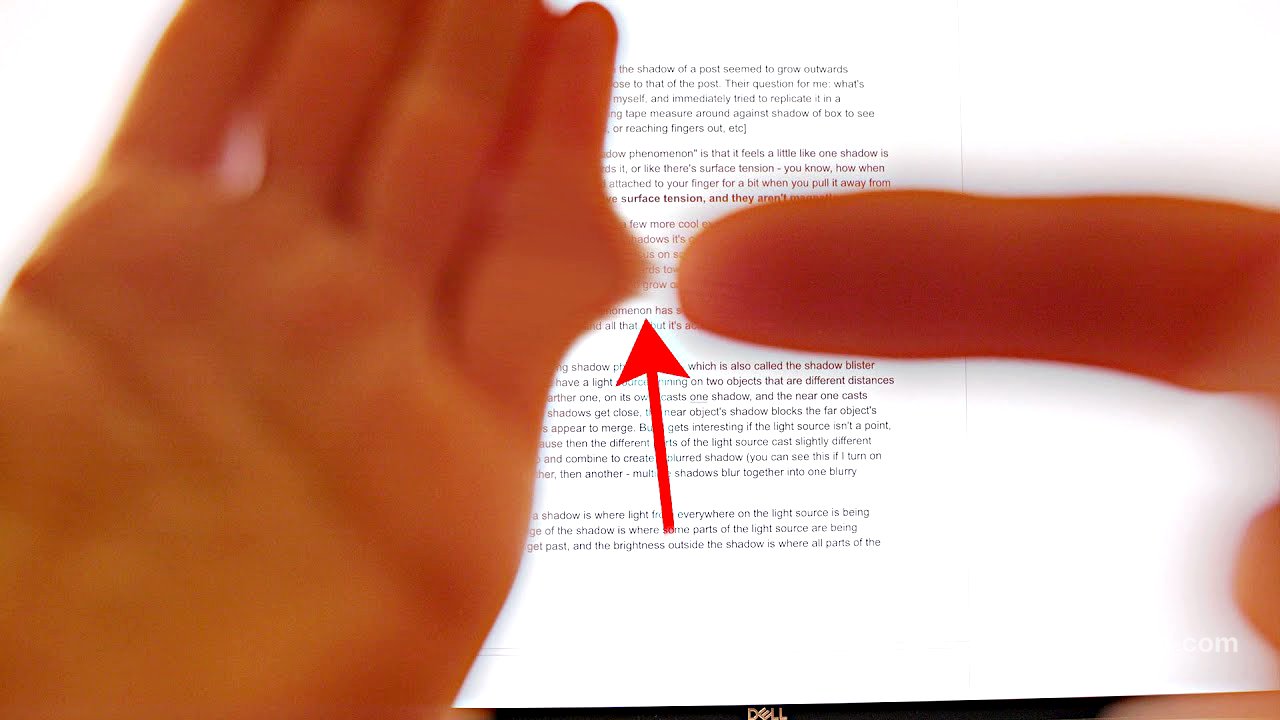TLDR;
This video explains the "touching shadow" or "shadow blister" effect, where shadows or out-of-focus objects appear to merge or grow towards each other. This phenomenon isn't due to magnetism or surface tension, but rather the geometry of light and shadows, especially when the light source has size and objects are at different distances. The same effect occurs with lenses and blurry images (bokeh), where the apparent growth is due to the shrinking of bokeh circles. The direction of the "blister" depends on whether the lens is focused too near or too far, revealing background colours in a mirage-like effect.
- The touching shadow effect is caused by the geometry of light and shadows, not magnetism or surface tension.
- The effect is more pronounced with larger light sources and objects at varying distances.
- Blurry images (bokeh) exhibit a similar effect due to the shrinking of bokeh circles when objects overlap.
- The direction of the "blister" depends on the lens focus, revealing background colours.
Introduction to the Touching Shadow Phenomenon [0:01]
The video starts by introducing a peculiar phenomenon where shadows appear to grow outwards and merge when they get close to each other, almost as if they're magnetic or have surface tension. This effect isn't limited to shadows; it can also be observed with out-of-focus objects, where a finger held in front of the hand seems to make the hand grow towards it. The presenter initially considered wave properties of light like diffraction and interference as potential explanations, but the real reason is more straightforward geometry.
The Geometry Behind the Shadow Blister Effect [0:59]
The "touching shadow" phenomenon, also known as the shadow blister effect, occurs when a light source shines on two objects at different distances. The shadows cast by these objects appear to merge when close. With a non-point light source, different parts of the source cast overlapping shadows, creating a blurred shadow. The core dark part of the shadow blocks light from all parts of the source, while the blurry edge blocks light from some parts. As the nearer object shades the farther one, it intercepts shadows from the inside dark edge of the blur outwards, making the farther object's shadow appear to grow until they merge. This effect relies on the light source having area and the objects being at different distances.
Pinhole Explanation of Shadow Blisters [2:24]
Replacing the farther object with a pinhole demonstrates how light rays are flipped when they pass the object. When a nearer object blocks the light, the shadow is blocked in reverse, creating the blister on the opposite shadow. This same blistering effect occurs with cameras or eyes, where the size of the lens opening, rather than the light source, causes the effect.
Bokeh and Blurry Images [2:47]
Light rays from a point source are focused by a lens to a point and then diverge. If the image sensor or retina is slightly in front of or behind that point, the image of the light source spreads into a circle, creating bokeh. When an object is placed between the light source and the lens, it blocks the outermost light rays, shrinking the bokeh circle from the opposite side. For an extended blurry object like a hand, the shrinking bokeh makes the hand appear to blister outwards towards a finger.
Lens Blister Effect: Near vs. Far Focus [3:51]
The lens blister effect has two sides, depending on focus. If the image sensor is too close to the lens (focused too far), blocking light shrinks the bokeh in the opposite direction. If the sensor is too far (focused too close), the bokeh shrinks in the same direction as the blocking. A funny shape placed in front of the lens appears normal in the far bokeh and inverted in the near bokeh.
Mirage-Like Visions and Overlapping Fingers [4:18]
When focusing too near, the closer finger seems to blister outwards, revealing a mirage-like vision of the more distant object's colour due to the shrinking bokeh. The blister has the colour you'd see if the background were dark, as that light always reaches the lens but is usually overwhelmed by the bright bokeh. Against a bright background, blurry fingers overlap with a blister, while against a dark background, they overlap normally.
Attraction and Repulsion Illusions [5:12]
When focusing a lens on the far side of a bright grid, a blurry finger appears to attract the lines. Conversely, when focusing on the close side, the finger appears to repel the lines. These are illusions explained by the geometry of light rays passing through a lens.
Summary: Geometry of Shadows and Lenses [5:27]
In summary, blurry fingers and shadows don't have surface tension or magnetic properties. The touching shadow and lens blister effects are due to the somewhat strange geometry of shadows and lenses.









